Escargot, often thought of as simple gastropods nestling in pretty gardens, are in fact a delicious and much-loved delicacy in France.
With an annual French consumption exceeding 10,000 tons, their success is undeniable. Discover what makes them so popular, from their meticulous preparation to their traditional recipes and amusing anecdotes!
Discover Escargot: A Hidden Treasure of French Cuisine
These slow but tasty little creatures have long been a delight of French gastronomy.
But what is a snail, you ask? Well, it’s a little marvel with a delicate shell that moves leisurely through gardens, feeding on delicious herbs and plants.
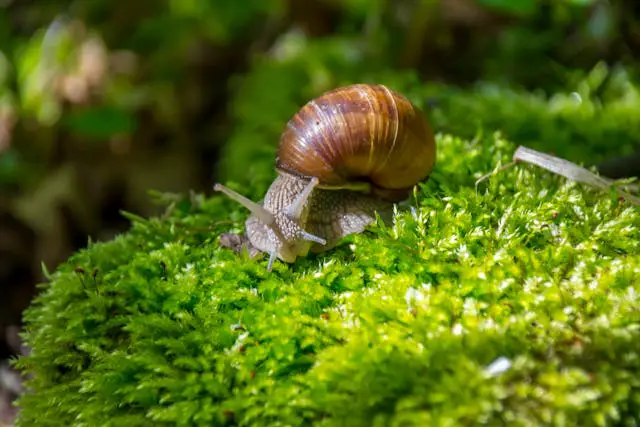
But what truly makes them special is their transformation into an exquisite dish emblematic of French cuisine.
Sought after for their unique flavor and tender texture, escargot are a fixture on French menus, a symbol of the country’s culinary refinement.
Cultural Aspects: A history of Tradition and Delight
Escargot have a deep-rooted history in France, dating back to prehistoric times when they were eaten by the working classes.
In 1814, during a diplomatic visit to Paris, escargot were served to the Czar of Russia at the request of the President of the Provisional Government, marking a historic gastronomic moment.
Since then, escargot have become an emblematic dish of French cuisine, associated with refinement and tradition.
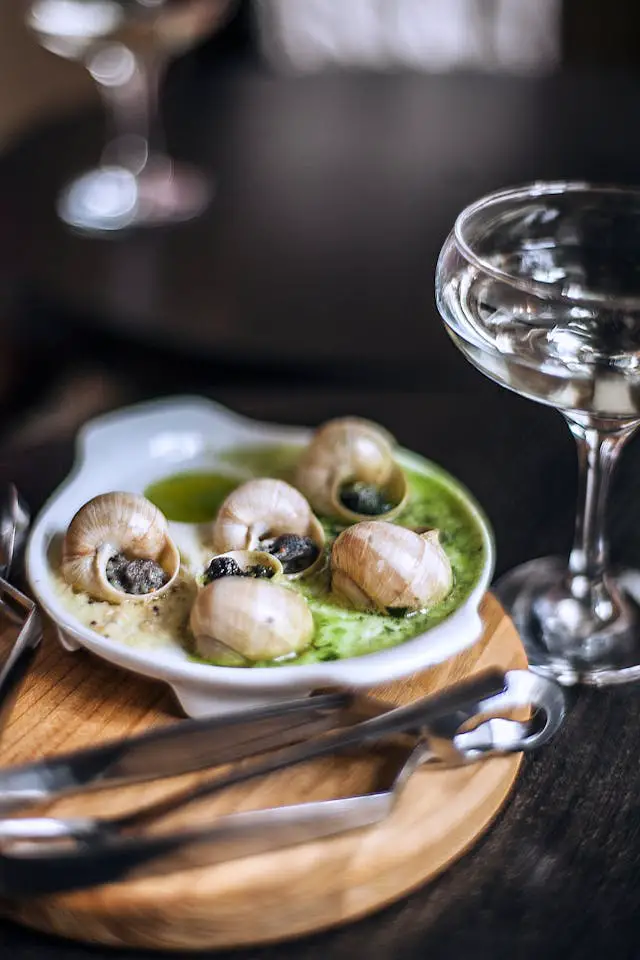
The French, proud of their culinary heritage, consider escargot to be an essential experience for food lovers.
For tourists, it’s often a culinary adventure in its own right, an immersion into the country’s culture and flavors.
Snail Farming: A Well-Honed Art
In France, snail farming is a well-established practice. Snails are raised in specialized farms, where optimal conditions are created to ensure their growth and quality.
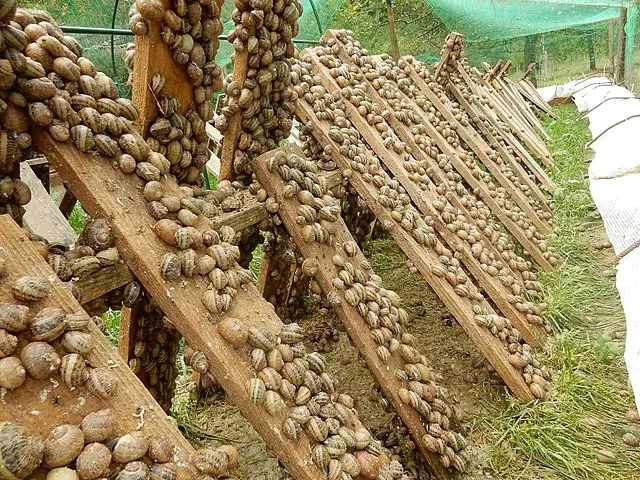
Breeding cycles vary from one region to another: from March to October in regions with cold winters and moderately dry summers, and from September to May in regions with mild, wet winters and hot, dry summers.
The two most commonly eaten snail species are Helix pomatia, also known as the Burgundy snail (Escargot de Bourgogne), and Helix aspersa, or the garden snail.
These species have a delicate taste and tender texture, making them the preferred choice in French cuisine.
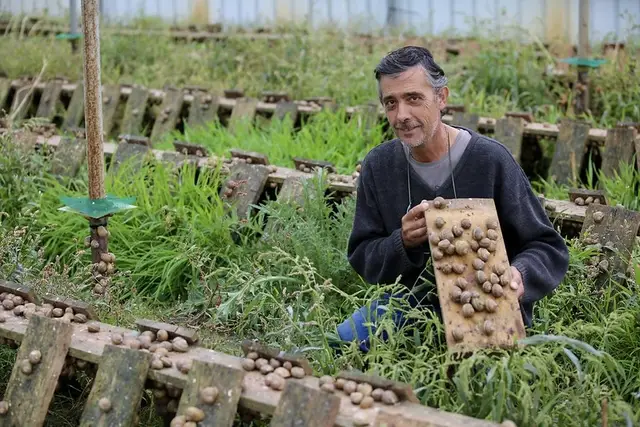
The Preparation Process: From Farm to Plate
Preparing snails for consumption is a long and meticulous process involving multiple stages.
First, the snails are carefully cleaned to remove all traces of dirt and grime.
Next, they are soaked in salt water or vinegar to clear them of mucus. They are then cooked in boiling water and stripped of their shells.
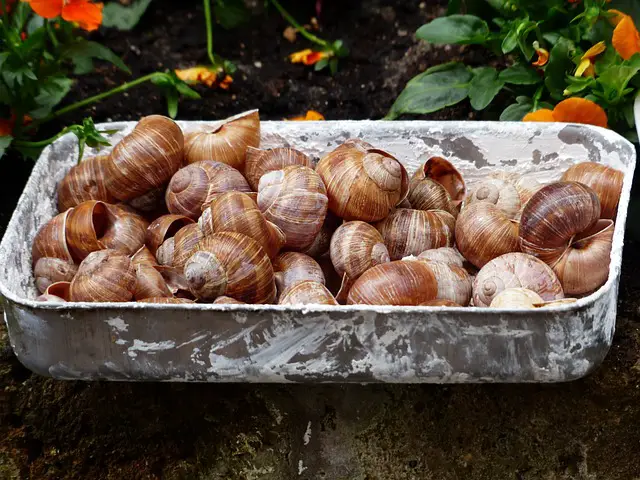
After removing the inedible parts of the snails, they and their shells are cleaned again in vinegar and salt water.
Finally, the snails are prepared according to traditional recipes and served in their shells, ready to be savored.
Traditional Recipes: French Gourmet Delicacies
The most famous escargot recipe in France is undoubtedly escargots à la bourguignonne.
In this classic recipe, escargot are served in their shells and topped with snail butter—a blend of butter, garlic, shallots, and parsley—guaranteeing an explosion of flavors.
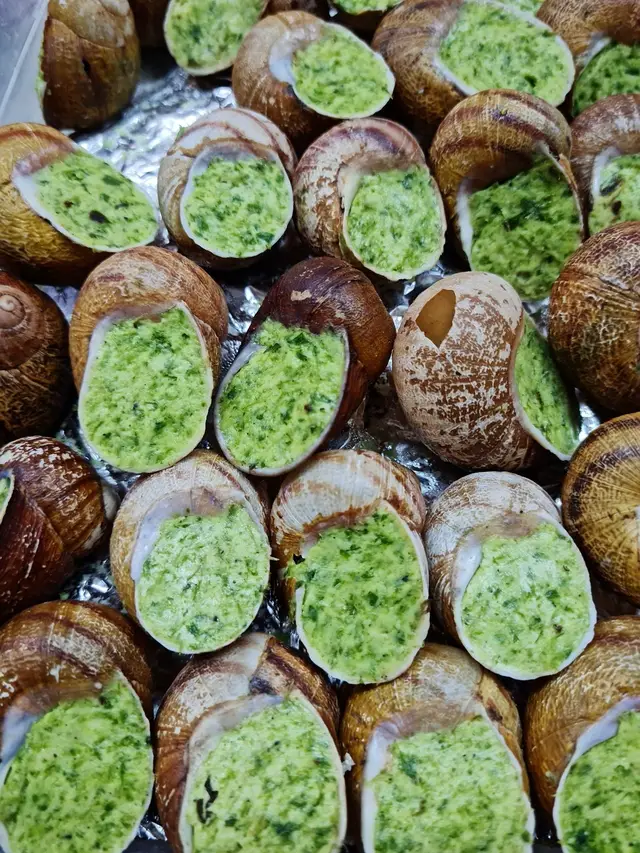
In addition to this emblematic recipe, French cuisine abounds in regional variations.
In the Pyrénées-Orientales region, the Catalan recipe is popular and escargot are served with aïoli and a local wine. In Provence, escargot are presented in tomato sauce, while in Charentes, they are paired with ground meat, spices, and tomato sauce.
Each recipe offers a unique and delicious culinary experience.
Escargot Consumption in France: Where and When to Eat Them
In France, eating escargot is an experience worth trying, and many places offer this delicious specialty.
Escargot can be found on many gourmet menus, notably in Paris, at Restaurant L’Escargot Montorgueil.
In the Burgundy region, notably in Dijon, many restaurants feature escargots à la bourguignonne, while in the south of France, in Provence, some establishments serve escargots à la provençale.
Traditionally, escargot are eaten all year round, but they are particularly popular during the summer months when gardens are teeming with these delicate creatures.
Escargot are often on the menu for special occasions such as end-of-year celebrations and weddings, adding a touch of refinement to these festive events.
Quirks and Fun Facts: The Secrets of Escargot
- Snails can hibernate for several months.
- Snail slime is used in the cosmetics industry for its moisturizing properties.
- Snails are hermaphrodites, possessing both male and female reproductive organs, and can regenerate their shells in the event of injury.
- Although they have eyes at the end of their tentacles, they have no ears, and snails are completely deaf.
- Despite the weight of their shells, snails are faster than slugs, moving at a maximum speed of 0.0902 feet per second.
- Snails have around 14,000 teeth arranged in rows on their tongues.
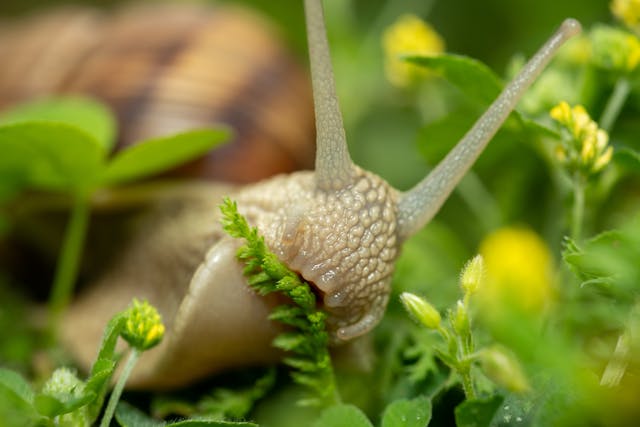
I aim to share my tips and recommendations for the beautiful country of France. My goal is to help you plan your next adventure, whether it’s a weekend getaway or a once-in-a-lifetime trip. From finding the best hotels and restaurants, to discovering unique activities and sights, I’ve got you covered!




